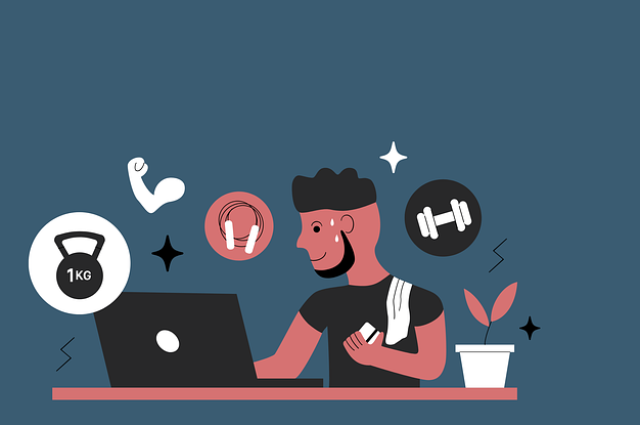
Image by Moondance from Pixabay
What appears to be a recent phenomenon has existed for centuries, where one generation had to maintain itself so that their progeny could survive both on a rock-solid foundation of resources as well as mentally and physically. Fitness, something that each culture across centuries has promoted to their successors with their cultural contexts in terms of diet and workout as well as the biological foundation to make sure they carry themselves out throughout the day to work as well making time out for themselves and their family to extend their well being, happiness and lifeline.
There were some common cultural practices around fitness and diet that have existed for centuries, which have either been modified to fit the modern industrial cultural landscape, or there are some whose definitions have changed so much that they almost seem to be myths. For example, the rigorous training methods of the Spartan army of Greece are seen as the cornerstone for bodybuilding and fitness, as well as to hone oneself into the warrior mindset. They would train outdoors, lifting heavy weights from the natural environment, such as huge rocks or heavy carts, to build strength or run across villages to build endurance. Whereas on the other hand, the notion in India that all of us should try to have our dinners by 7 pm in today’s day and age almost seems to be a luxury or a myth, but there’s a resourceful reason behind it. Before the invention of the clock and electricity, our ancestors would either use their shadows or the sunlight to observe time, and they would consume their food before sunset or before it got dark, and the most common time that went forward with that notion from generation to generation was 7 pm.
Nowadays, especially with Gen-Z, who aren’t just looking to slog at work till death, fitness remains an imperative aspect of their lives, with the previous generation also getting the opportunity of improving their health, which they previously didn’t have by looking online for guidance and visiting gyms. But just like engaging in any new activity, there are times when both the youth and the elderly remain slightly misguided due to the constant influx of information on any subject. It also subsequently becomes difficult for them to decipher and segregate correct information from incorrect one, especially if it’s not their area of expertise, and that is why there are very strong reasons as to why one must not look upto social media for fitness-related instructions or guidance.
One of the aspects of fitness which is imperative in let’s say gaining a decent amount of weight if you’re skinny or losing it if you’re morbidly obese is diet, or what you consume on a daily basis for nutrients. Whenever we feel lethargic, we tend to look at our weight, we make a decision to change our diet, and then we look online for resources, but here’s the catch. The diets online are random, not person or culture-specific. When we talk in regards to a person, the individual's past medical history and dietary preferences have to be taken into consideration before preparing his or her day-to-day diet. Secondly, we have to consider the culture of the individual, for instance, an Indian might prefer a diet loaded with species whereas an individual from Norway might prefer something a bit sweeter.
The second aspect that comes to staying fit is workouts in the general fitness sense, which comprise strength and cardio. But there’s more to it than meets the eye. Firstly, an individual has to gradually progress in his or her workout, just like learning any new skill, such as drawing or writing. Secondly, an individual has to check for injuries to avoid heavy workouts to could further exacerbate it. Third, an individual’s routine and objectives have to be taken into account in order to structure the workout. For example, a boxer's workout will be different when compared to a software engineer. A boxer is easily motivated and has all the time in the world for fitness, whereas a white collar software engineer has to be first mentally motivated and secondly has to carve time out of his or her busy schedule to workout or keep himself fit.
Third, the perception of fitness has to be adapted to a broader spectrum. It is a journey, not a destination to which you arrive. It is something you carry on doing lifelong. At the same time, it’s not your entire life as people online promote it, but merely a tool to make your life better. It’s also the responsibility of a good trainer to be a good teacher, as he or she has the responsibility to make you independent after teaching you the basics of fitness.
The marketing of fitness online has primarily focused on the outer surface level fitness, but it’s more than just that. It’s also about keeping one’s internal organs, such as the kidney, liver, lungs and heart intact and not overdoing any workout or diet regime that could be fatal to any of these organs. There’s also a significant amount of gender bias about workouts, such as workouts for women being different from workouts for men, whereas in reality, both genders will do workouts in a similar manner; it’s just that their bodily response based on their gender and genetics would be different. For example, women tend to store fat mostly in their arms and hips as opposed to men, who store it primarily in their belly.
Lastly, it’s also essential to keep one’s mental fortitude intact, by interacting and spending time with loved ones, family, peer and friends to keep oneself mentally rejuvenated, managing negative emotions such as anger, anxiety depression and being socially fit and not just doing workouts in isolation because if one’s mental balance is not on upswing then he or she cannot be ready for a full fledged heavy energetic workout.
